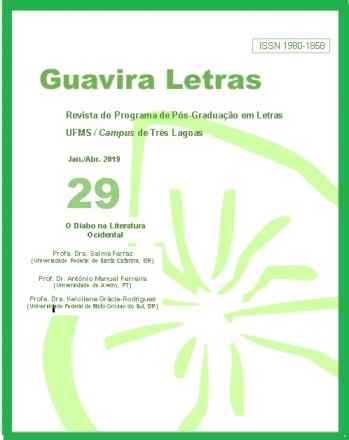A EFABULAÇÃO TRÁGICA EM A TRAGÉDIA DA RUA DAS FLORES E OS MAIAS
Guavira Letras
A EFABULAÇÃO TRÁGICA EM A TRAGÉDIA DA RUA DAS FLORES E OS MAIAS
Autor Correspondente: L. F. Leal | [email protected]
Palavras-chave: fábula trágica, A Tragédia da Rua das Flores, Os Maias
Resumos Cadastrados
Resumo Português:
O artigo discorrerá sobre a efabulação trágica nas obras A Tragédia da Rua das Flores e Os Maias de Eça de Queirós. O Objetivo será o de discutir os elementos constitutivos da fábula trágica, a peripécia, peripeteia, o reconhecimento, anagnorisis, e a catástrofe, sparagmós nas duas obras em questão. O desenvolvimento da intriga, visto que é descoberta a feição incestuosa dos amores de Victor e Genoveva e de Carlos e Maria Eduarda, se dá de acordo com a efabulação trágica definida por Aristóteles (1973). Tanto na obra A Tragédia da Rua das Flores quanto em Os Maias ocorre a repentina mudança das ocorrências, ocasionando a reviravolta do sucesso à desventura. Em se tratando da catástrofe, ela é mais calamitosa em A Tragédia da Rua das Flores, uma vez que Genoveva suicida-se, Victor sofre e Timóteo, abatido, morre. Em Os Maias, a catástrofe se limita à separação dos dois amantes e à morte de Afonso da Maia, que não suporta viver em face do incesto dos netos e da insistência consciente de Carlos no engano trágico. Eça de Queirós consegue representar, por meio dos elementos constitutivos da fábula, a sua visão trágica do homem e do mundo.
Resumo Inglês:
The article will discuss about the tragic storytelling in the books A Tragédia da Rua das Flores and Os Maias, by Eça de Queirós. The objective is to discuss the constitutive elements of the tragic fable, the adventure, the recognition, anagnorosis and the catastrophe, sparagmós in the two books presented. The development of the intrigue happens according to the tragic storytelling defined by Aristotle as the incestuous affection of Victor and Genoveva and Carlos and Maria Eduarda are discovered. In both books A Tragédia da Rua das Flores and Os Maias, there is a sudden change in the occurances, causing a turnaround from success to misfortune. About the catastrophe, it is more calamitous in A Tragédia da Rua das Flores, because Genoveva commits suicide, Victor suffers and Timóteo, miserably dies. In, Os Maias, the catastrophe is limited to the separation of the two lovers and to the death of Afonso da Maia, who could not live after the incest of his grandchildren and the conscious insistence of Carlos in his tragic mistake. Eça de Queirós can represent, through constitutive elements of the fable, his tragic point of view of the men and the world.

